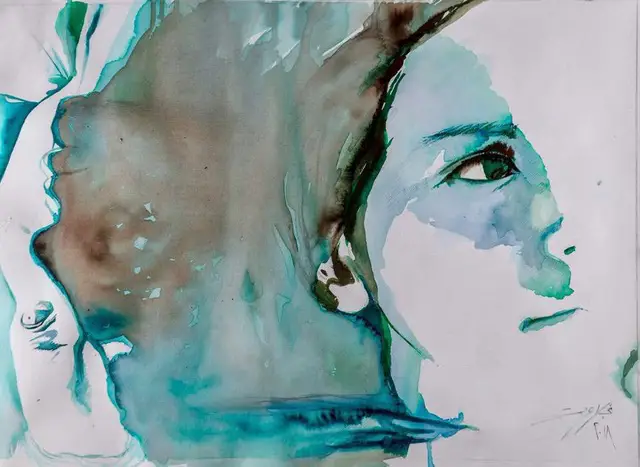Tuesday May 21, 2019 By: Dr. Mona AbuHamda

Bipolar depression, once known as manic-depression, is a brain disorder that causes unusual changes in mood, energy, activity levels, and the ability to carry out day-to-day tasks such as going to school/work, hanging out with friends and enjoying hobbies and activities.
Symptoms of bipolar disorder are not like the normal changes in mood and energy that everyone has from time to time. Bipolar symtoms are more extreme and tend to last for most of the day, nearly everyday, for at least one week. The ups and downs are very different from the person’s normal mood and behaviors. These symptoms are very painful to the individual and to their family and friends. They can result in damaged relationships, poor performance at work or school and even suicide.
Bipolar disorder often develops in a person’s late teens or early adulthood, and some people can have their first symptoms during childhood.
So what are common symptoms of Bipolar depression ?
There are four unusually intense emotional states or “moods” that people with Bipolar disorder experience known as “mood episodes.” They can be overly happy, overexcited, energetic and can keep going sometimes without food or sleep for days. This state is called a “manic episode.”They can also be extremely sad, hopeless, isolated and depleated of energy. This state is called a “depressive episode.” There is a state that is similar but less severe than a manic episode known as a “hypomanic episode”
Sometimes, a person can experience both symptoms of mania and depression at the same time. This is called a “mixed episode.”
There are three main types of Bipolar Depression:
- Bipolar I Disorder—defined by manic episodes or symptoms that last at least 7 days, these symptoms are sometimes so severe that the person needs immediate hospital care for their own safety. At times, during these episodes, a person can be become psychotic, meaning that they don’t know what is real and what is not during the time that they are experiencing the episode.
- Usually, depressive episodes occur as well (before or after the manic or hypomanic episodes) and they typically last at least 2 weeks.
- Bipolar II Disorder—This type is considered less severe than Bipolar I and the person goes through a pattern of depressive episodes and hypomanic episodes
- Cyclothymic Disorder (also called cyclothymia)—In this type, the person goes through numerous periods of hypomanic symptoms as well numerous periods of depressive symptoms lasting for at least 2 years (1 year in children and adolescents). However, the symptoms do not meet the diagnostic requirements for a hypomanic episode and a depressive episode. This is considered the mildest form of Bipolar disorder and most of the time the person is just considered very “moody” and the illness goes undiagnosed because the person can continue to function without major disruption.
| People having a manic episode may: | People having a depressive episode may: |
| · Feel very “up,” “high,” or elated (silly in younger patients).
· Have a lot of energy · Have increased activity levels · Feel “jumpy” or “wired” · Have trouble sleeping without feeling tired · Become more active than usual · Talk really fast about a lot of different things · Be agitated, irritable, or short-tempered · Feel like their thoughts are going very fast (racing thoughts) · Think they can do a lot of things at once · Do risky things, like spend a lot of money or have reckless sex putting themselves in dangerous situations |
· Feel very sad, down, empty, or hopeless
· Have very little energy · Have decreased activity levels · Have problems with sleep, they may sleep too little or too much · Feel like they can’t enjoy anything · Feel worthless or guilty · Have trouble concentrating · Forget things a lot · Eat too much or too little · Feel tired or “slowed down” · Think about death or suicide |
Is there a cure ?
Like most other mental illnesses, there is no cure for Bipolar depression, however, getting the correct diagnoses is key.
With a combination of medication and intensive psychotherapy with qualified psychiatrists and psychologists, people can lead full and productive “normal” lives.
Famous people who suffer with Bipolar disorder:
-
-
- Mariah Carey
- Mel Gibson
- Demi Lovato
- Kurt Cobain
- Jimi Hendrix
- Ernest Hemingway
- Ted Turner
- Frank Sinatra
- Sinead O’Connor
- Jean-Claude Van Damme
- Winston Churchill
- Robin Williams
- Metta World Peace
-
Source: United States Department of Health and Human Services
National Institute of Health

Dr. Mona Ezzat-AbuHamda began her graduate studies at Regent’s College in London in 1993 and received her doctoral degree from the George Washington University in Washington, DC in 2003
She serves as clinical faculty at the George Washington University, school of professional psychology and held an adjunct faculty position at The Johns Hopkins University, school of business and education. In addition to her private practice in Mclean, VA. Dr. AbuHamda is an independent consultant providing clinical services at Washington Behavioral Health, a day-treatment outpatient hospital for adolescents and adults who struggle with addiction disorders
She is a native of Egypt and lives in the Washington DC Metro area with her family.
Painting courtesy Nagla Ezzat Artwork
***If you liked this article, don’t forget to subscribe to our newsletter and receive our articles by email.
